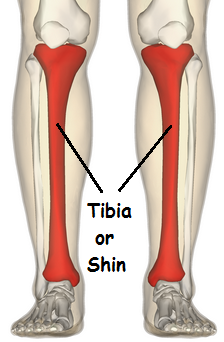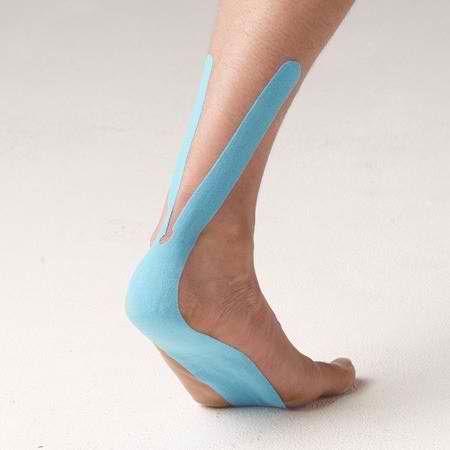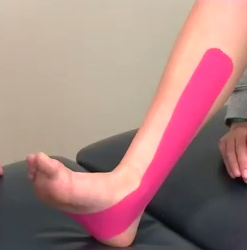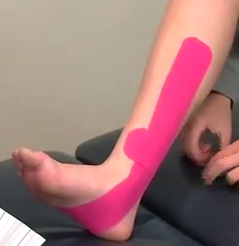At one time or another, we can’t help but experience shin splints, especially for athletes that run a lot on hard surfaces. In this article, we’ll educate you about shin splints, its causes, symptoms and treatments. We’ll also show you how to take advantage of Kinesiology Taping to relieve this painful condition of the shin.
The Shin
In human anatomy, the shin, otherwise known as tibia, shinbone or shank bone – is the larger of the two bones (the other one is the fibula) located in the lower part of the body. The tibia is also the second largest bone in the human body and its main function is to carry the body weight of a human.
Kinesiology Taping Shin Splints
Check this awesome video from the Dr K Series, featuring Physiotherapist and Kinesiology Taping Expert Adam Collyer:
[youtube]https://www.youtube.com/watch?v=c0Q05AZToJ8[/youtube]
What you shall need:
- Dr K Kinesiology Tape
- Scissors
*** Also use Spider Tech Pre Cut Kinesiology Tape
Guide in Kinesiology Taping for Shin Splints
Kinesiology taping can help by supporting and decompressing the overloaded muscles and the painful tissues around the affected area.
- Step 1 – Measure the tape starting from the bony bump on the outs ide of the foot then around the sole of the feet then halfway up the shin. Keep in mind that the tape will be longer when stretched.
- Step 2 – Cut the tape, then round the edges to avoid peeling off.
- Step 3 – Set the anchor tab by creating a little fold at the edge then tearing along that fold line. Peel the back tape to finally create the tab.
- Step 4 – Stick the tab on that little bony bump on the outside of the foot. From there, bring the tape down the sole of the foot then peel back some to expose the tape to stick down without using any actual tension.
- Step 5 – From the sole, peel the tape most of the way up, leaving an inch or more of unpeeled tape. Coming around the corner then aim to run the inside of the shin up applying 50% of tension.
- Step 6 – Lastly, peel of the edge of the tape and stick without any tension.
- Step 7 – Give the tape a good rub to ensure it sticks properly.
Depending on the type or areas of pain, you can create one or more horizontal pieces to allow more decompression. So let’s say the pain is at the lower third of the shin, here’s what you should do:
- Step 1 – Measure the tape crossing the lower third of the shin. Cut the length then trim the corners.
- Step 2 – Doing center tape application, tear the middle of the tape.
- Step 3 – Pull the corners back real tight, applying around 75% tension and stick it down over the painful area.
- Step 4 – Leave the edges free and stick it without any tension. Give the tape a rub to finish.
Shin Splints
Shin splints, also known as medial tibial stress syndrome (MTSS), are injuries along the  shinbone that causes pain. Although the exact injury is not known, shin splints seem to result from the inflammation of the tendons, muscles and bone tissues of the shin. Shin splints are most common among runners and dancers.
shinbone that causes pain. Although the exact injury is not known, shin splints seem to result from the inflammation of the tendons, muscles and bone tissues of the shin. Shin splints are most common among runners and dancers.
Causes:
- Repetitive stress on the shinbone and the tissues and tendons attaching the muscles to the bones. (ie excessive running on hard surfaces)
- Stress fractures of small breaks in the lower leg bones
- Swollen muscles
- Sudden increase in the intensity/distance of workouts
- Flat feet
- Over pronation
- Excessive stress on one hip or leg when running
Signs and Symptoms:
- Dull ache, soreness and tenderness along the inner part of your lower leg.
- Mild swelling in the lower leg.
- With continuing workout, pain may become so intense that one would stop the workout all in all.
Treatments:
- Take a rest and stop activities which could cause shin splints.
- Use ice packs to the affected area.
- Take medicines like ibuprofen, paracetamol or naproxen to relieve pain and inflammation.
- Apply kinesiology taping techniques to help ease pain and swelling.
Did we help you?
Educating and giving you usable and up-to-date information and news in the field of sports medicine is our major purpose. We hope we were able to provide you the information you need in our article above on how to effectively kinesiology tape shin splints . If we were able to help you, liking and sharing the article is very much welcome!!! For comments and suggestions for future posts and information you want us to discuss, please leave them in the comments box below J


